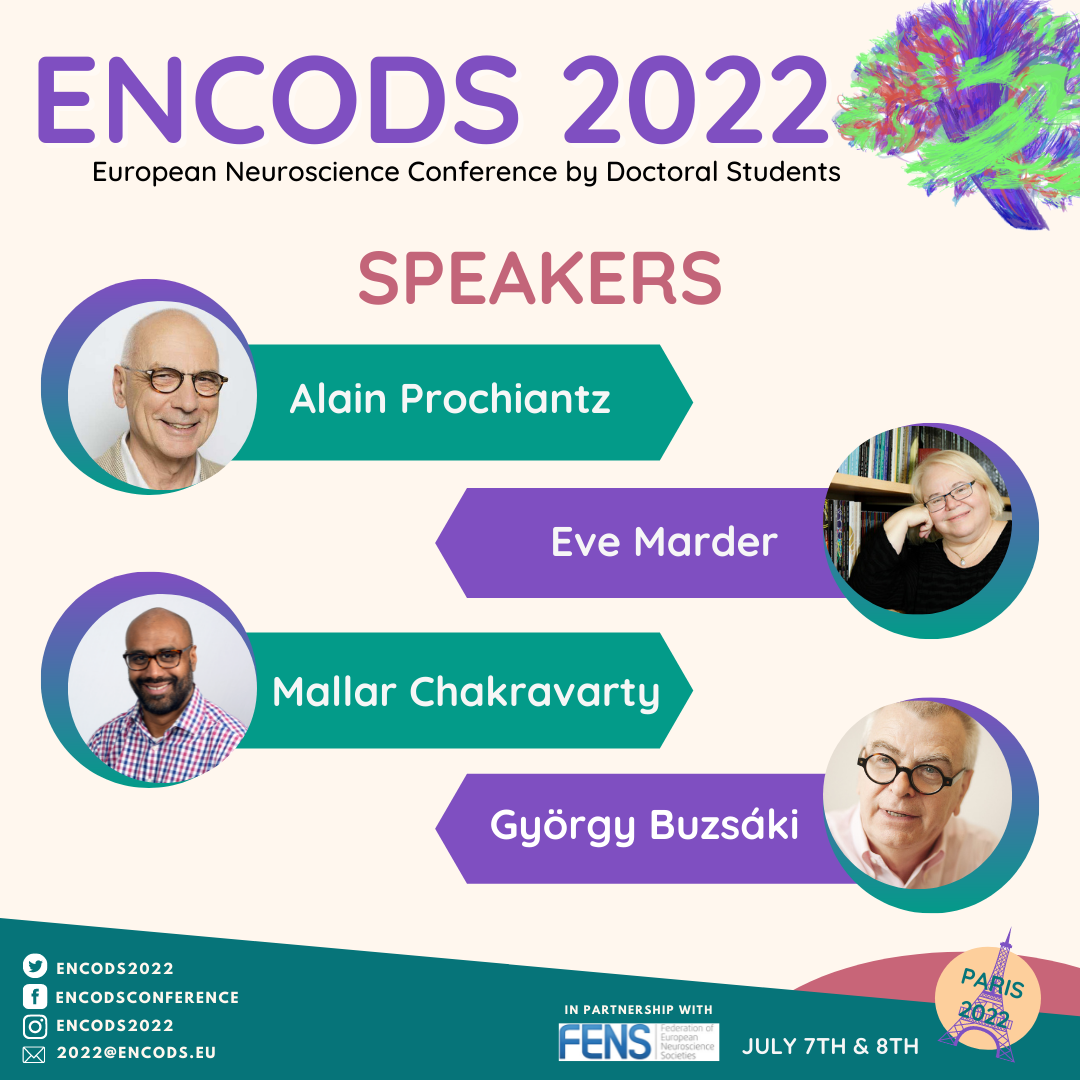- Event Details
- Programme
- Speakers
- Workshops
- Activities
- ENCODS 2022 video
- News
- Supporters
- Organising Committee
- Alain Prochiantz, Collège de France, France
Dr. Alain Prochiantz is a former fellow of the École normale supérieure (ENS) and he has obtained his Ph.D. at the University René Diderot in Paris. He has been head of the CNRS unit “Development and Evolution of the Nervous System” and has chaired the Department of Biology at ENS. Dr. Prochiantz has been involved in studies about brain morphogenesis. One of the contributions of his laboratory is the discovery of a novel signaling mechanism based on the intercellular transfer of homeoprotein transcription factors and the study of the developmental and physiological functions of this pathway. Based on the analysis of how these proteins travel across biological membranes, his laboratory has identified the first transduction peptides capable of addressing pharmacological substances to the interior of cells. In addition to these biological studies, Alain Prochiantz has written several books. He is today head of the Center for Interdisciplinary Research in Biology at Collège de France.
- Eve Marder, Brandeis University, USA
Dr. Eve Marder is a professor of Neuroscience at Brandeis University, and she is currently an elected councilor for the National Academy of Science, a member of the American Academy of Arts and Sciences, and the United States National Academy of Sciences. Dr. Marder studies the dynamics of small neuronal networks, and her work was instrumental in demonstrating that neuronal circuits are not “hard-wired” but can be reconfigured by neuromodulatory neurons and substances to produce a variety of outputs. For more than 20 years Marder’s lab has combined experimental work with insights from modeling and theoretical studies. Her lab pioneered studies of homeostatic regulation of intrinsic membrane properties and stimulated work on the mechanisms by which brains remain stable while allowing for change during development and learning. Dr. Marder received numerous awards for her pioneering work including the Kavli Prize in Neuroscience in 2016.
- Mallar Chakravarty, Douglas Research Centre, Canada
Dr. Mallar Chakravarty leads the Computational Brain Anatomy Laboratory located at the Douglas Research Centre and is the director of the Brain Imaging Centre (Canada). In addition, Dr. Chakravarty is an Associate Professor in the Department of Psychiatry and an Associate Member of the Department of Biomedical Engineering at McGill University. Dr. Chakravarty received his Ph.D. in Biomedical Engineering from McGill University. Between fellowships, Mallar worked at the Allen Institute for Brain Science (Seattle, WA, USA). He received the Young Investigator Award Junior 1 from the Fonds de Recherche Santé Québec. His laboratory is interested in the anatomy of the brain and how it matures through adolescence, how it stays healthy through the normal aging process, how it is influenced by genetics and environment, and how alterations in brain anatomy are related to neurodegenerative disorders such as Alzheimer’s and Parkinson’s disease, and neurodevelopmental disorders such as schizophrenia. To do so, they use and develop sophisticated computational techniques to study the anatomy of the brain and explore multiple imaging modalities such as MRI and fMRI. Dr. Chakravarty is also a promoter of open and reproducible science.
- György Buzsaki, New York University School of Medicine, USA
Dr. György Buzsàki is the Biggs Professor of Neuroscience at New York University School of Medicine. He is a member of the National Academy Society of Sciences USA, Academiae Europaeae, and Hungarian Academy of Sciences. His lab focuses on how neuronal circuitries of the brain support its cognitive capacities, with a primary interest in brain oscillations, sleep, and memory. Buzsàki’s hypothesis is that in brain networks, especially those serving cognitive functions, the packaging and segmentation of neural information is supported by the numerous self-organized rhythms the brain generates. Brain rhythms allow for temporal correlations to occur at multiple time scales which can be studied and mathematically defined. He has pioneered numerous technical innovations, including large-scale recording methods using silicon chips and the NeuroGrid, an organic, conformable electrode system used in both animals and patients. Buzsaki is co-recipient of the Brain Prize 2011 for his work describing the organization of neurons in the hippocampus and cortex and recipient of the Ralph Gerard Prize 2020. He is also the author of two books “Rhythms of The Brain” and “The Brain from Inside Out”.
Download the ENCODS 2022 poster with Confirmed speakers.
